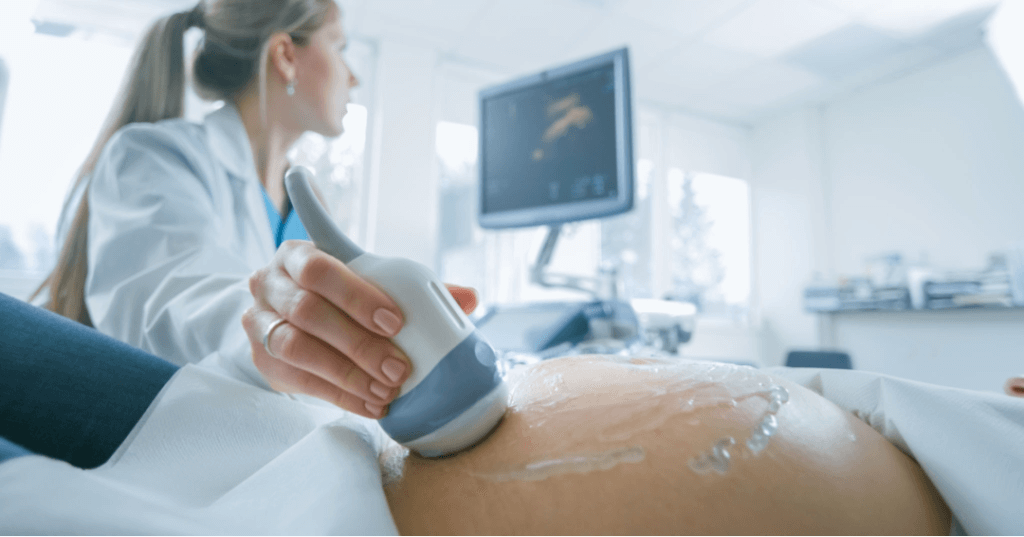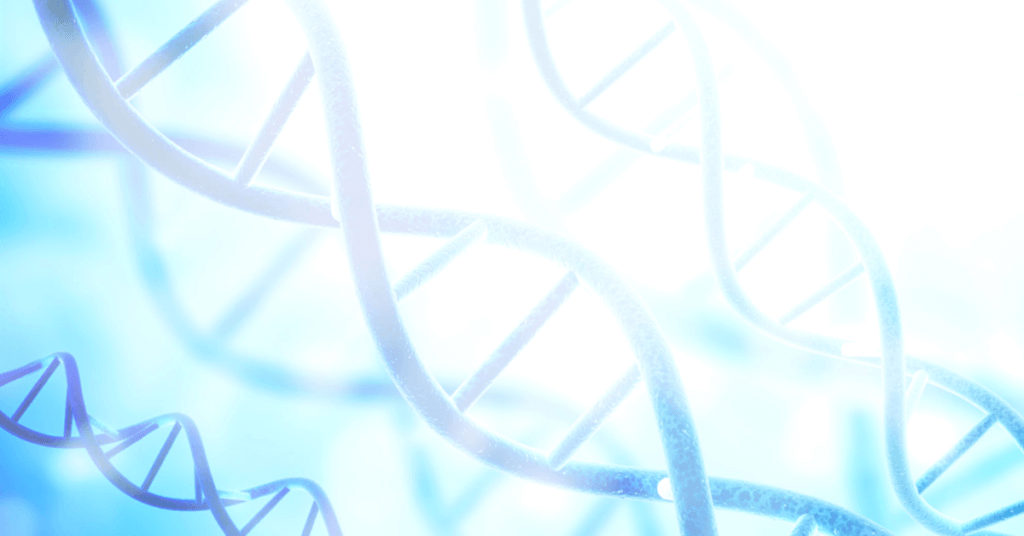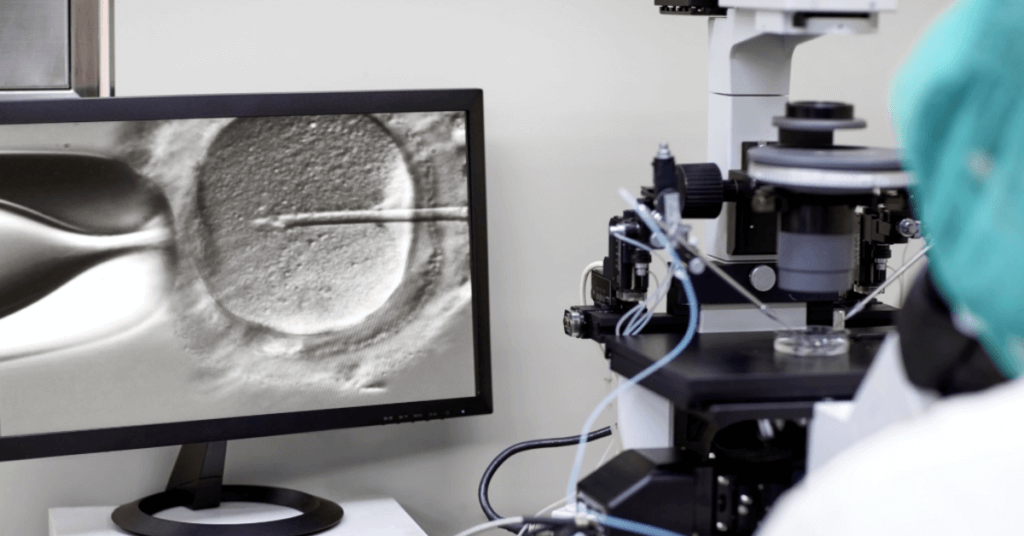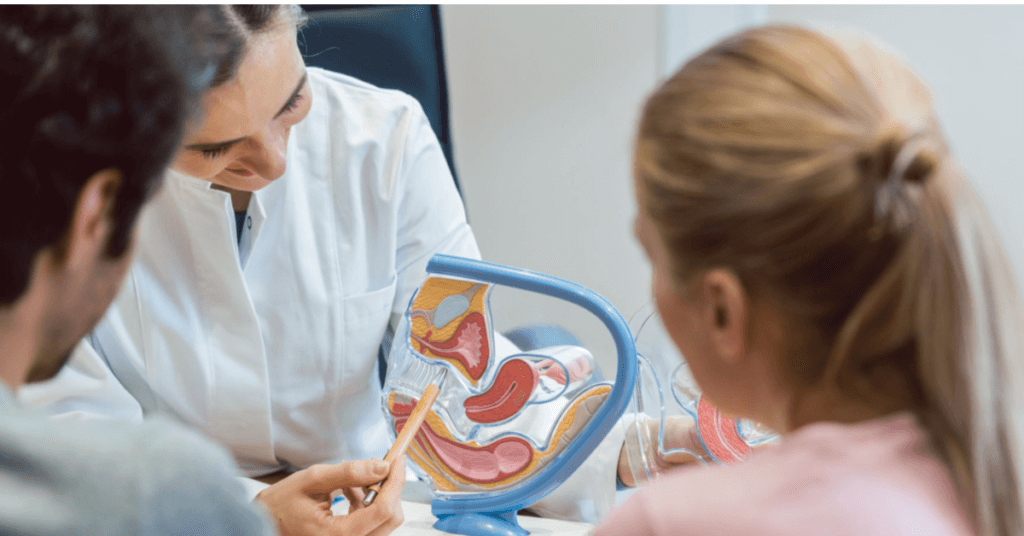
Unexplained Infertility after Abortion
Secondary infertility is a condition where couples who have previously conceived naturally experience difficulties in getting pregnant again. Unexplained infertility after surgical abortions is a type of secondary infertility that affects women who have undergone termination of pregnancy through surgery. This condition can be frustrating and emotionally distressing for women who are trying to conceive, and may also be accompanied by vaginal bleeding and changes in the uterine cavity that affect the reproductive system.
There are various reasons why unexplained infertility after surgical abortions occurs. In some cases, damage to the endometrium or scarring due to infection may be the cause. Vaginal bleeding during the abortion procedure may also contribute to this condition. Case reports have suggested that Asherman syndrome, a condition where scar tissue forms inside the uterus, may also be a contributing factor to unexplained infertility after the fetus is removed through abortion.
Despite numerous case reports, the exact cause of unexplained infertility after surgical abortions remains unclear, and more research is needed to fully understand this phenomenon. Women who experience unexplained infertility after surgical abortions may benefit from seeking medical advice and exploring treatment options with a fertility specialist. The condition could be related to changes in the uterine cavity or endometrium, which can be detected through transvaginal ultrasound.
It is important for women who have had an abortion in the past to know that they are not alone in experiencing unexplained infertility. Many women struggle with this issue, and there are treatments available that can help them conceive naturally or through assisted reproductive technologies such as IVF. In some cases, a transvaginal ultrasound may be used to assess the endometrium following suction curettage. Additionally, hysteroscopy may be recommended to evaluate any potential damage to the uterine lining.suction curettage. Additionally, hysteroscopy may be recommended to evaluate any potential damage to the uterine lining.
Women who suspect they may be experiencing unexplained infertility, which is a rare cause, should seek medical advice from their healthcare provider or a fertility specialist. A thorough evaluation including transvaginal ultrasound and hysteroscopy will help determine if there are any underlying factors contributing to their difficulty conceiving, especially if they have had a surgical abortion in the past.
In addition to seeking medical advice, lifestyle changes can also improve the chances of conception for women experiencing unexplained infertility after abortion. Maintaining a healthy weight, avoiding smoking and excessive alcohol consumption, reducing stress levels, and eating a balanced diet rich in nutrients can all contribute positively towards fertility. It is also recommended to undergo an ultrasound to check the endometrium for any abnormalities and to monitor fetal bones during pregnancy. It is important to be aware of any potential side effects that may occur during this process.
The Prevalence of Infertility after Abortion
Increased Risk of Infertility after Abortion
Induced abortion, whether through surgical or medical means, can increase the risk of infertility and other side effects. According to studies, women who have had one induced abortion are at a slightly higher risk of experiencing fertility problems than those who have never had an abortion. The risk increases with multiple abortions. Women who have undergone two or more surgical abortions may be three times more likely to experience fertility problems than those who have never had an abortion. In some cases, hysteroscopy may be necessary to remove fetal bones that were not fully expelled during the procedure. It is important for the patient to discuss any concerns about potential side effects with their healthcare provider before undergoing an induced abortion.

Complications from Abortions
Abortion-related complications such as vaginal bleeding and prolonged retention of fetal bones can damage the endometrium, which is the lining of the uterus that supports pregnancy. This damage can affect a patient’s future pregnancies by decreasing the chances of implantation and increasing the likelihood of miscarriage, leading to secondary infertility. In some cases, complications from abortions can lead to scarring in the uterus or fallopian tubes, which can cause blockages and make it difficult for sperm to reach the egg. Hysteroscopy may be necessary to evaluate and treat any uterine scarring caused by an abortion.
First Trimester Pregnancies
The risk of infertility after abortion is highest during the first trimester of pregnancy. During this time, hormonal changes are occurring rapidly as the body prepares for pregnancy. Any disruption in these changes caused by an induced abortion can affect future reproductive health. Women who undergo medical abortions using medication may also be at increased risk for infertility if they experience incomplete abortions or infections following the procedure. In some cases, hysteroscopy may be required to remove fetal bones that were not fully expelled during the abortion procedure, which can further increase the risk of infertility for the patient.

Understanding the Link between Abortion and Infertility
Physical and Hormonal Effects of Abortion on Infertility
Abortion is a medical procedure that terminates a pregnancy. While it may seem like a straightforward solution for women who are not ready to have children, in some cases it can have long-term effects on their reproductive health. One of the most significant risks associated with abortion is infertility, which may require further medical interventions such as hysteroscopy. Additionally, abortion can also impact the health of bones in some cases.
Physical damage to the uterus and cervix resulting from an abortion can cause scarring and blockages that prevent fertilization or implantation of an embryo. If the uterine lining is damaged, it may be unable to support a pregnancy, leading to infertility. Furthermore, if the cervix is scarred or blocked, sperm may not be able to reach the egg for fertilization. In some cases, hysteroscopy may be required to assess the extent of the damage. Additionally, damage to nearby bones during the procedure can also contribute to fertility issues.
In addition to physical damage, abortions can also cause hormonal imbalances in women’s bodies, leading to secondary infertility. These imbalances can disrupt the menstrual cycle and reduce fertility by preventing ovulation or making it more difficult for eggs to travel through the fallopian tubes.
Multiple Abortions Increase Risk of Infertility
The risk of infertility after an abortion increases with each subsequent procedure. Women who have had multiple abortions are at higher risk of developing complications such as scarring and blockages that can lead to infertility. The more times a woman undergoes an abortion, the greater her chances of experiencing fertility problems later in life.
It is crucial for women who have undergone abortions to discuss their reproductive health with their healthcare providers regularly, especially regarding secondary infertility. Doctors can monitor for any potential fertility issues and provide advice on how best to manage them.

How Abortion Affects Future Fertility
Physical and Emotional Effects of Abortion on Future Fertility
Physical damage to the uterus is one of the most significant effects of abortion on future fertility, leading to secondary infertility. The procedure can cause scarring, which may negatively affect a woman’s ability to conceive in the future. Abortion can lead to an infection that can further damage the uterus and decrease fertility, resulting in secondary infertility. These physical effects may be particularly pronounced for women who undergo multiple abortions.
The risk of complications during future pregnancies also increases after abortion, including the possibility of secondary infertility. Women who have had an abortion are more likely to experience preterm birth or miscarriage in subsequent pregnancies. The risk of placenta previa, a condition where the placenta covers part or all of the cervix, is also higher in women who have had an abortion. These complications can be life-threatening for both mother and child and may result in long-term health problems.
Emotional trauma from abortion can also impact future fertility and desire for future pregnancies, leading to secondary infertility. Many women experience depression, anxiety, guilt, or shame after having an abortion, which can make it difficult for them to form healthy relationships with partners or become emotionally ready for pregnancy again. In some cases, women may even develop post-traumatic stress disorder (PTSD) as a result of their experiences.
Multiple Abortions Increase Negative Consequences on Future Fertility
Women who undergo multiple abortions face even greater risks of secondary infertility and complications during future pregnancies than those who only have one procedure done. Each time a woman has an abortion, she increases her risk of developing scar tissue in her uterus, which can lead to secondary infertility.

Exploring the Science behind Infertility after Abortion
Medical abortion is a common method of terminating pregnancies, but it can have long-term effects on a woman’s fertility, including secondary infertility. One of the ways medical abortion affects fertility is by causing changes in the uterine lining that may affect fertilization and implantation. The medication used to induce an abortion can thin the uterine lining, making it difficult for a fertilized egg to implant properly.
Suction curettage, also known as surgical abortion, is another common procedure for terminating pregnancies, but it can also cause scarring in the uterus or damage to the fallopian tubes. This scarring or damage can make it difficult for sperm and eggs to meet, reducing the chances of fertilization. In some cases, women may require further treatment after suction curettage to remove any remaining fetal bones or tissue that could be causing infertility. Another option for ending a pregnancy is the abortion pill, also known as medication abortion.
According to Mayo Clinic, women who have had multiple abortions or terminated pregnancies after 14 weeks may have a higher risk of experiencing infertility. This increased risk is likely due to the cumulative effect of multiple procedures on the reproductive system over time. Factors such as age, overall health status, and previous medical history can all contribute to a woman’s risk of developing infertility after an abortion.
Infertility after abortion can result from a combination of factors, including the type of procedure used, a woman’s medical history and experience during and after termination. Women who are concerned about their fertility after an abortion should speak with their healthcare provider about possible options for testing and treatment. With proper care and attention from qualified medical professionals, many women are able to overcome infertility and conceive successfully after an abortion.
Risk Factors for Developing Unexplained Infertility after Abortion
Potential Risks of Developing Unexplained Infertility after Abortion
Unexplained infertility refers to the inability to conceive naturally without any known cause or underlying medical condition. Several studies have shown that women who undergo abortions are at a higher risk of developing unexplained infertility than those who don’t. This risk increases with subsequent abortions, making it crucial for women to consider the long-term effects of abortion on their reproductive health.

Side Effects of Abortion That May Contribute to Unexplained Infertility
Abortion can have several side effects that may contribute to unexplained infertility in some cases. These side effects include scarring and damage to the uterus, infection, hormonal imbalances, and psychological trauma. Scarring and damage to the uterus can affect implantation and make it difficult for fertilized eggs to attach correctly, leading to infertility.
Factors That Increase the Risk of Developing Unexplained Infertility after Abortion
Rare Causes of Unexplained Infertility after Abortion
Autoimmune disorders such as lupus or rheumatoid arthritis can cause the body to attack its reproductive organs, leading to infertility. Genetic abnormalities such as Turner syndrome or fragile X syndrome can also affect fertility in some women. Exposure to toxins or radiation can damage reproductive organs and lead to infertility. However, it is important to note that certain medications, such as the abortion pill or medication abortion, can also have an impact on fertility.

Preventing Unexplained Infertility after Abortion: What You Can Do
Recommended Waiting Period Before Trying to Conceive Again
After an abortion, it is important to give your body time to heal before trying to conceive again. The recommended waiting period can vary depending on the type of abortion and the individual’s health condition. However, in cases of secondary infertility, it is advisable to wait at least one menstrual cycle or four weeks before attempting to get pregnant again.
This waiting period allows your body time to recover physically and emotionally from the abortion, which can help reduce the risk of secondary infertility. It also ensures that any remaining pregnancy hormones have cleared out of your system, which is important for overall reproductive health.
Preconception Check-Up
During the preconception check-up, your healthcare provider may perform various tests such as blood work, pap smear, STD testing, and ultrasound scans. They may also recommend lifestyle changes or prescribe medications if necessary. However, the abortion pill is not typically discussed during this visit.
Reducing Stress Levels
High levels of stress can negatively impact fertility by disrupting hormonal balance and ovulation. Therefore, it is crucial to take steps to reduce stress levels when trying to conceive after an abortion.
Maintaining a Healthy Lifestyle
Maintaining a healthy lifestyle is essential for optimal fertility and overall health. Eating a balanced diet rich in fruits, vegetables, whole grains, and lean protein sources can improve fertility outcomes. However, it’s important to note that medication abortion or the use of abortion pills may also affect fertility and should be discussed with a healthcare provider.
Regular exercise can also help regulate hormone levels and improve overall health. Quitting smoking and avoiding excessive alcohol consumption are also critical factors in promoting reproductive health. However, it is important to note that the use of abortion pill should only be considered under the guidance of a medical professional.
Seeking Advice From Fertility Specialists
If you have been trying to conceive for more than a year without success, it may be time to seek advice from a fertility specialist. Fertility specialists can perform various tests and treatments to identify and address any underlying fertility issues. However, it is important to note that fertility treatments are not the same as an abortion pill.
Some of the common tests performed by fertility specialists include semen analysis, ovarian reserve testing, hysterosalpingography (HSG), and laparoscopy. Treatments for infertility may include medications, intrauterine insemination (IUI), or in vitro fertilization (IVF). However, it is important to note that abortion pill is not a treatment option for infertility.
Diagnosis and Treatment Options for Unexplained Infertility
Ruling Out Other Possible Causes
When a couple is unable to conceive after trying for a year or more, it may be time to consider seeking medical help. Unexplained infertility is a diagnosis given when all tests and evaluations come back normal, yet conception still does not occur. The first step in diagnosing unexplained infertility involves ruling out other possible causes through various tests and evaluations. The use of abortion pill is not recommended as it can lead to complications and may not be effective in treating infertility.
Both partners will undergo testing to evaluate their reproductive health. These tests may include semen analysis, blood work to check hormone levels, ultrasounds to examine the uterus and ovaries, and hysterosalpingography (HSG) to evaluate the fallopian tubes. If any issues are found during these initial tests, they can be addressed with appropriate treatment. The testing does not include assessment for the abortion pill.
Treatment Options for Unexplained Infertility
Medical Procedures for Diagnosis and Treatment
Addressing Stigma and Seeking Support for Coping with Unexplained Infertility after Abortion
Breaking the Stigma and Seeking Support for Coping with Unexplained Infertility after Abortion
Helping patients cope with unexplained infertility after abortion is a complex issue that requires not only medical attention but also emotional and psychological support. Unfortunately, stigma surrounding abortion and infertility can prevent patients from seeking help, leading to further isolation and distress. In this section, we will discuss ways to address stigma and seek support for coping with unexplained infertility after abortion.
Overcoming Stigma through Openness
Seeking Support from Healthcare Professionals
Joining Infertility Support Groups
The Importance of Comprehensive Reproductive Healthcare for Women
Women who have had abortions may be at risk of developing unexplained infertility due to the damage caused by the procedure. The prevalence of infertility after abortion is significant, and it is essential to understand how these procedures affect future fertility. Research has shown that abortions can lead to scarring in the uterus or fallopian tubes, hormonal imbalances, or infections that can cause infertility.
Diagnosis and treatment options for unexplained infertility are available but require a thorough evaluation by a specialist in reproductive medicine. Treatment options may include medications such as Clomid or assisted reproductive technologies like in vitro fertilization (IVF).depending on your local laws




